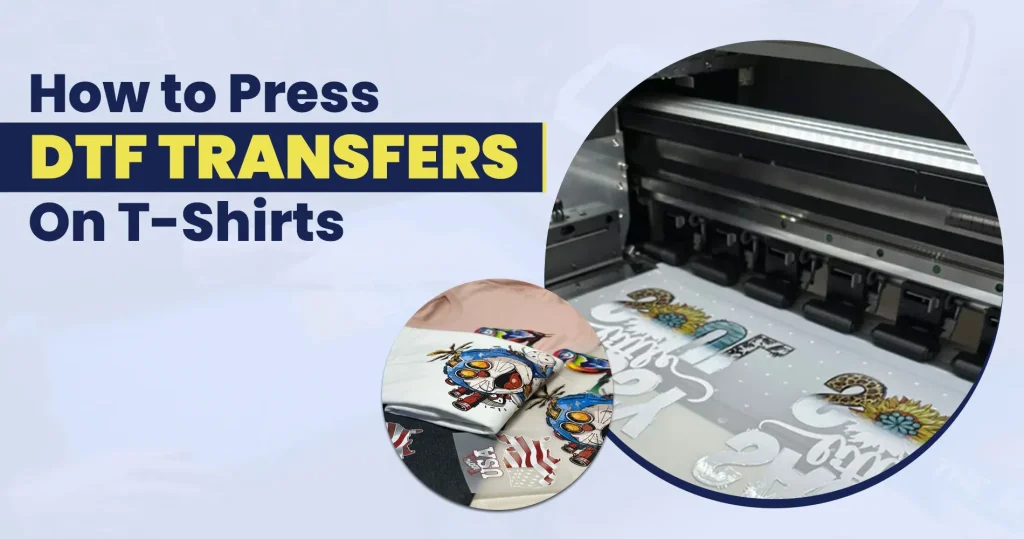DTF Transfer, or Direct-to-Film transfer, has emerged as a revolutionary technology in the world of custom apparel printing. This innovative process allows designers to print vibrant graphics directly onto a specialized film, which is then transferred onto various fabrics using heat. With its capability to create high-resolution designs, DTF transfer has become a go-to solution for graphic design trends that prioritize versatility and quality. As businesses strive to meet the growing demand for personalized clothing and promotional items, understanding DTF printing technology is essential for success. In this article, we will explore how the size of printed designs impacts the effectiveness and visual appeal of DTF transfers.
Direct-to-Film transfer, often abbreviated as DTF, represents a breakthrough in fabric transfer techniques that has captivated the custom apparel market. This method involves printing detailed images onto a film that can be applied to different textiles, offering graphic designers a powerful tool for creating unique designs. The versatility of this printing approach caters to various substrates, from cotton to synthetic materials, setting the stage for stunning applications in the fashion industry. As businesses tap into graphic printing solutions to enhance consumer engagement, the significance of mastering DTF technology will be vital in staying ahead of graphic design trends. By examining the intricate relationships between design size and print quality, we can uncover the potential that DTF brings to modern custom clothing solutions.
Understanding the Basics of DTF Printing Technology
Direct-to-Film (DTF) printing technology has revolutionized the way custom apparel is produced. Unlike traditional methods, DTF involves printing designs directly onto a special film, which is then heat pressed onto various fabrics. This innovative approach allows for vibrant colors and intricate graphic details that can be applied to a multitude of substrates, including cotton, polyester, and even synthetic blends. The ease of use and the ability to quickly produce high-quality designs have made DTF a preferred choice among graphic designers and small businesses alike.
Moreover, DTF transfer technology offers unparalleled versatility, enabling users to create unique and personalized apparel efficiently. The process not only streamlines production but also reduces waste by eliminating the need for pre-treating fabrics, making it an eco-friendly alternative. With the rise of custom apparel printing demands, the DTF method stands out for its ability to cater to small batch orders while maintaining top-notch quality, setting it apart from other fabric transfer techniques.
Frequently Asked Questions
What is DTF transfer and how does it work?
DTF Transfer, or Direct-to-Film transfer, is a printing technology that involves printing designs onto a special film that is then heat-pressed onto fabric. This method allows for vibrant, high-resolution graphics on various materials, making it popular in custom apparel printing.
What makes DTF printing technology a preferred choice for graphic designers?
DTF printing technology is favored because it offers unmatched versatility in application and the ability to reproduce intricate designs with stunning colors. Designers can easily create custom apparel and promotional items, amplifying their creativity without the limitations of some older printing methods.
How does size impact the quality of DTF transfers?
The size of a DTF transfer significantly affects print quality and adhesion. Larger designs require careful heat distribution and may need adjustments in temperature and press time to avoid any adhesion issues and ensure that the design remains vibrant and intact after transfer.
What are some common applications of DTF transfer in custom apparel?
DTF transfer is commonly used for creating custom T-shirts for events, personalized merchandise like tote bags, and unique graphics for boutique clothing lines. Its ability to handle various materials makes it suitable for a wide range of custom apparel applications.
What technical considerations should designers keep in mind when preparing files for DTF printing?
Designers should prioritize using vector graphics for scalability, ensuring high resolution to prevent pixelation, and verifying correct sizing for the intended output. These considerations help maintain print quality during the DTF transfer process.
What trends are influencing the growth of DTF printing technology in the market?
The rising demand for personalized apparel and custom products is driving the growth of DTF printing technology. Businesses are investing in DTF to differentiate themselves in a competitive market, showcasing the sustainability and future potential of this innovative printing method.
| Key Point | Description |
|---|---|
| Introduction | DTF transfer technology is vital for creating vibrant graphics in textile printing. |
| Understanding DTF Transfer | DTF involves printing onto a film that is heat-pressed onto fabric, compatible with various materials. |
| Versatility in Application | Ideal for custom clothing and promotional products, particularly in small runs. |
| Quality of Prints | Improvements in ink and film quality contribute to enhanced graphics. |
| Impact of Size on Transfer | Larger designs can complicate heat distribution but create more stunning visuals. |
| Market Trends | Growing demand for personalized products drives DTF technology adoption. |
| Technical Considerations | Optimize design files by using vector graphics and high resolutions for better outputs. |
Summary
DTF transfer technology is transforming the world of custom design by emphasizing the importance of size in the production of stunning graphics. By leveraging its impressive versatility and quality enhancement capabilities, businesses can cater to the increasing demand for personalized textile products. Understanding how size affects the transfer process allows designers to fully exploit DTF technology, paving the way for superior graphic applications. As the printing landscape continues to shift, the adaptation and innovation within the DTF transfer space is essential for businesses seeking to thrive in a competitive market.


